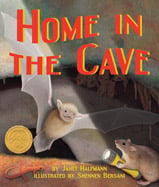Alignment to Standards for MI

| Grade | Number | Standard |
|---|---|---|
| 1 | L.HE.01.11 | Observable Characteristics- Plants and animals share many, but not all, characteristics of their parents. |
| 1 | L.HE.01.11 | Identify characteristics (for example: body coverings, beak shape, number of legs, body parts) that are passed on from parents to young. |
| 1 | L.HE.01.12 | Classify young animals based on characteristics that are passed on from parents (for example: dogs/puppies, cats/kittens, cows/calves, chicken/chicks). |
| 1 | L.OL.01.13 | Identify the needs of animals. |
| 1 | L.OL.E.1 | Animals and plants need air, water, and food. Plants also require light. Plants and animals use food as a source of energy and as a source of building material for growth and repair. |
| 2 | E.SE.02.21 | Describe the major landforms of the surface of the Earth (mountains, plains, plateaus, valleys, hills). |
| 2 | L.HE.02.13 | Identify characteristics of plants (for example: leaf shape, flower type, color, size) that are passed on from parents to young. |
| 2 | L.HE.E.1 | Observable Characteristics- Plants and animals share many, but not all, characteristics of their parents. |
| 2 | L.OL.E.1 | Animals and plants need air, water, and food. Plants also require light. Plants and animals use food as a source of energy and as a source of building material for growth and repair. |
| 3 | L.EV.03.12 | characteristics and functions of observable body parts to the ability of animals to live in their environment (for example: sharp teeth, claws, color, body covers). |
| 3 | L.EV.E.1 | Different kinds of organisms have characteristics that help them to live in different environments. |
| 3 | L.OL.03.32 | Identify and compare structures in animals used for controlling body temperature, support, movement, food-getting, and protection (for example: fur, wings, teeth, claws). |
| 3 | L.OL.E.3 | Organisms have different structures that serve different functions in growth, survival, and reproduction. |
| 4 | 4 _ G1.0.4 | Use geographic tools and technologies, stories, songs, and pictures to answer geographic questions about the United States. |
| 4 | L.EC.E.1 | Organisms interact in various ways including providing food and shelter to one another: Some helpful: others are harmful to the organism and other organisms. |
| 4 | L.OL.04.15 | plants require air, water, light, and a source of energy and building material for growth and repair. |
| 4 | L.OL.04.16 | Determine that animals require air, water, and a source of energy and building material for growth and repair. |
| 4 | L.OL.E.1 | Organisms have basic needs. Animals and plants need air, water, and food. Plants also require light. Plants and animals use food as a source of energy and as a source of building material for growth and repair. |
| 5 | L.EV.05.11 | Explain how behavioral characteristics (adaptation, instinct, learning, habit) of animals help them to survive in their environment. |
| 5 | L.EV.05.12 | Describe the physical characteristics (traits) of organisms that help them survive in their environment. |
| 5 | L.HE.05.12 | Distinguish between inherited and acquired traits. |
| 5 | L.HE.M.1 | Inherited and Acquired Traits - The characteristics of organisms are influenced by heredity and environment. For some characteristics, inheritance is more important; for other characteristics, interactions with the environment are more important. |
| K | L.OL.00.11 | Identify that living things have basic needs. |
| K | L.OL.00.12 | Identify and compare living and nonliving things. |
| K | L.OL.E.1 | Organisms have basic needs. Animals and plants need air, water, and food. Plants also require light. Plants and animals use food as a source of energy and as a source of building material for growth and repair. |